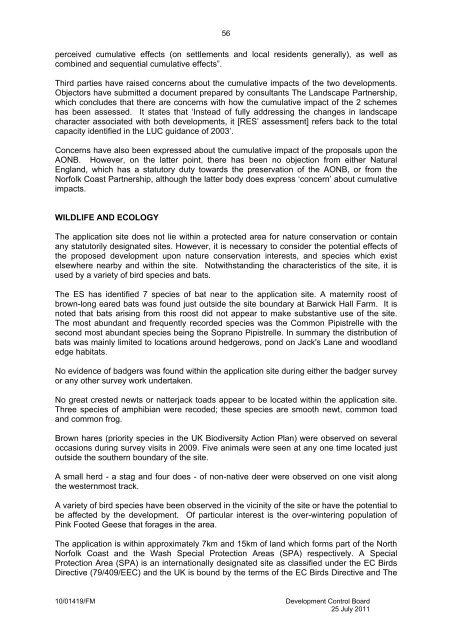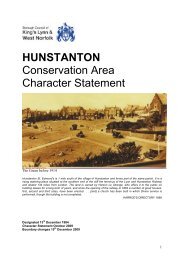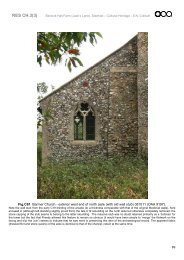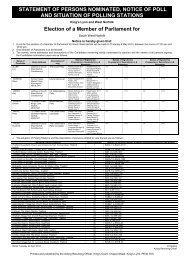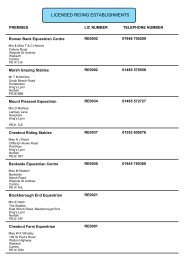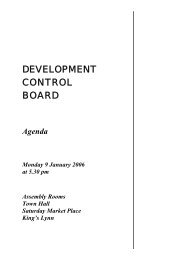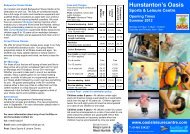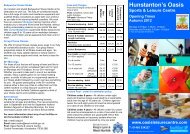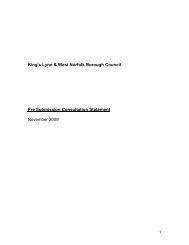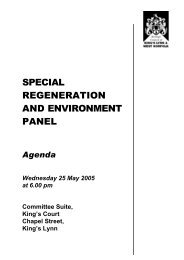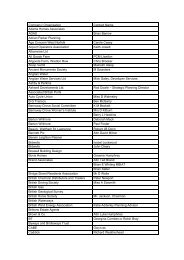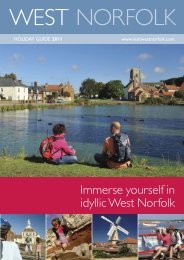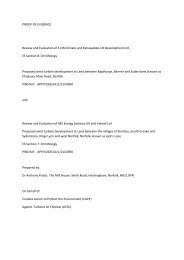11/00713/F - Borough Council of King's Lynn & West Norfolk
11/00713/F - Borough Council of King's Lynn & West Norfolk
11/00713/F - Borough Council of King's Lynn & West Norfolk
Create successful ePaper yourself
Turn your PDF publications into a flip-book with our unique Google optimized e-Paper software.
perceived cumulative effects (on settlements and local residents generally), as well as<br />
combined and sequential cumulative effects”.<br />
Third parties have raised concerns about the cumulative impacts <strong>of</strong> the two developments.<br />
Objectors have submitted a document prepared by consultants The Landscape Partnership,<br />
which concludes that there are concerns with how the cumulative impact <strong>of</strong> the 2 schemes<br />
has been assessed. It states that ‘Instead <strong>of</strong> fully addressing the changes in landscape<br />
character associated with both developments, it [RES’ assessment] refers back to the total<br />
capacity identified in the LUC guidance <strong>of</strong> 2003’.<br />
Concerns have also been expressed about the cumulative impact <strong>of</strong> the proposals upon the<br />
AONB. However, on the latter point, there has been no objection from either Natural<br />
England, which has a statutory duty towards the preservation <strong>of</strong> the AONB, or from the<br />
<strong>Norfolk</strong> Coast Partnership, although the latter body does express ‘concern’ about cumulative<br />
impacts.<br />
WILDLIFE AND ECOLOGY<br />
The application site does not lie within a protected area for nature conservation or contain<br />
any statutorily designated sites. However, it is necessary to consider the potential effects <strong>of</strong><br />
the proposed development upon nature conservation interests, and species which exist<br />
elsewhere nearby and within the site. Notwithstanding the characteristics <strong>of</strong> the site, it is<br />
used by a variety <strong>of</strong> bird species and bats.<br />
The ES has identified 7 species <strong>of</strong> bat near to the application site. A maternity roost <strong>of</strong><br />
brown-long eared bats was found just outside the site boundary at Barwick Hall Farm. It is<br />
noted that bats arising from this roost did not appear to make substantive use <strong>of</strong> the site.<br />
The most abundant and frequently recorded species was the Common Pipistrelle with the<br />
second most abundant species being the Soprano Pipistrelle. In summary the distribution <strong>of</strong><br />
bats was mainly limited to locations around hedgerows, pond on Jack's Lane and woodland<br />
edge habitats.<br />
No evidence <strong>of</strong> badgers was found within the application site during either the badger survey<br />
or any other survey work undertaken.<br />
No great crested newts or natterjack toads appear to be located within the application site.<br />
Three species <strong>of</strong> amphibian were recoded; these species are smooth newt, common toad<br />
and common frog.<br />
Brown hares (priority species in the UK Biodiversity Action Plan) were observed on several<br />
occasions during survey visits in 2009. Five animals were seen at any one time located just<br />
outside the southern boundary <strong>of</strong> the site.<br />
A small herd - a stag and four does - <strong>of</strong> non-native deer were observed on one visit along<br />
the westernmost track.<br />
A variety <strong>of</strong> bird species have been observed in the vicinity <strong>of</strong> the site or have the potential to<br />
be affected by the development. Of particular interest is the over-wintering population <strong>of</strong><br />
Pink Footed Geese that forages in the area.<br />
The application is within approximately 7km and 15km <strong>of</strong> land which forms part <strong>of</strong> the North<br />
<strong>Norfolk</strong> Coast and the Wash Special Protection Areas (SPA) respectively. A Special<br />
Protection Area (SPA) is an internationally designated site as classified under the EC Birds<br />
Directive (79/409/EEC) and the UK is bound by the terms <strong>of</strong> the EC Birds Directive and The<br />
10/01419/FM Development Control Board<br />
25 July 20<strong>11</strong><br />
56


